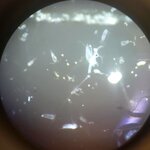What a difference a week makes. Last weekend our rivers and streams were hovering at just about the average flow, but following Friday’s arrival of Hurricane Debby our area experienced …
This item is available in full to subscribers.
Please log in to continue |


What a difference a week makes. Last weekend our rivers and streams were hovering at just about the average flow, but following Friday’s arrival of Hurricane Debby our area experienced flood-stage waters by late Friday night into early Saturday morning. On Sunday afternoon, the Beaverkill at Cooks Falls was flowing at 1,560 cubic feet per second, which is more than ten times the median average of 143 cfs over the past 111 years of record-keeping.
And thanks to cooler evenings, water temperatures have taken a nosedive - and have not reached 70 degrees Fahrenheit since last Tuesday.
Water temperatures over the past week have ranged from a low of 61 to a high of 66 degrees Fahrenheit - just about perfect for the trout.
As of this writing on Sunday afternoon, our rivers and streams are still discolored and a bit roily from the high water, but this week should be in great shape for trout fishing. When waters are high and discolored, fishing below the surface with larger streamers, such as a Black Leech, may be productive.
It’s also a good time to use terrestrial flies, such as ants, hoppers, beetles, inchworms, and the like, as these insects and invertebrates will have been washed into the water from overhanging banks and trees. Mid-August hatches continue with the tiny Blue-Winged Olives, as well as Light Cahills and Isonychias in the afternoons and evenings.
This past Saturday was the place to be, as scores of fly-fishers and Dette Flies customers gathered at Waterwheel Junction in Livingston Manor for their annual Customer Appreciation Day.
The Dette/Fox family (Joe Fox, mom Linda and partner Kelly Buchta) as well as the Dette Flies staff really outdid themselves in providing a wonderful afternoon.
The day featured a delicious Pig Roast cooked to perfection by Seth Cavarretta with all the trimmings, and homemade salads, baked goods, and desserts prepared by friends and family.
There were games, prizes, fly tying demonstrations, casting instruction, and the chance to meet with authors Mike Valla and Ed Van Put at their book signings. A wonderful time was had by all!
Recently we became aware of a new invasive species, the Fishhook Waterflea (Cercopagis pengoi) that has been found in Pepacton Reservoir.
According to the NYC DEP website, anglers fishing Pepacton had reported a new invasive species in early July. These tiny crustaceans were seen floating on the surface in great numbers. They have a long “tail-spine” with up to three pairs of barbs near the end, which enables them to attach to fishing lines and clog rod guides, especially while trolling.
Originally native to the Ponto-Caspian region of eastern Europe/western Asia, they were first discovered in Lake Ontario in August of 1998; believed to be introduced via international shipping ballast water.
They then spread to six of the Finger Lakes: Seneca, Cayuga, Otisco, Canandaigua, Owasco and Keuka within just one year. It is believed that the organisms spread via fishing equipment, in bait buckets and possibly on fishery sampling gear.
Last year they were discovered in New Croton Reservoir in Westchester County. These Waterfleas eat zooplankton and can disrupt the natural ecosystem, affecting fish and other organisms that are also dependent on the zooplankton.
Fishhook Waterfleas lay eggs that go dormant and are resistant to drying and freezing. They can survive being ingested by fish, and can pass through their digestive system unharmed. The eggs can be found in the mud, and can get caught on ropes, fishing lines, tackle and vegetation.
Unfortunately the eradication of Waterfleas is not possible; but, as with other invasive species, anglers can use effective methods to prevent the spread to other bodies of water.
The most common method of spreading these invasive species is by contaminated fishing gear - rods, reels, lines, flies, lures, boots, nets and the like. The best way to prevent outside contamination is to have a set of fishing gear (including boots, waders, rod/reel/line/net/tackle bag/lures/buckets and ropes) dedicated ONLY to Pepacton Reservoir. And bait should NEVER be released or dumped into any reservoir.
Some anglers may try to thoroughly clean gear with hot water under high pressure, but remember that the eggs are very tiny, and can survive drying and freezing. If you fish other waters, rivers or streams, it’s best to just keep separate gear for Pepacton.
For more information, please visit
The DEP has asked that any new sightings of Fishhook Waterfleas or any other unusual species or contamination be reported to metaylor@dep.nyc.gov.
Comments
No comments on this item Please log in to comment by clicking here